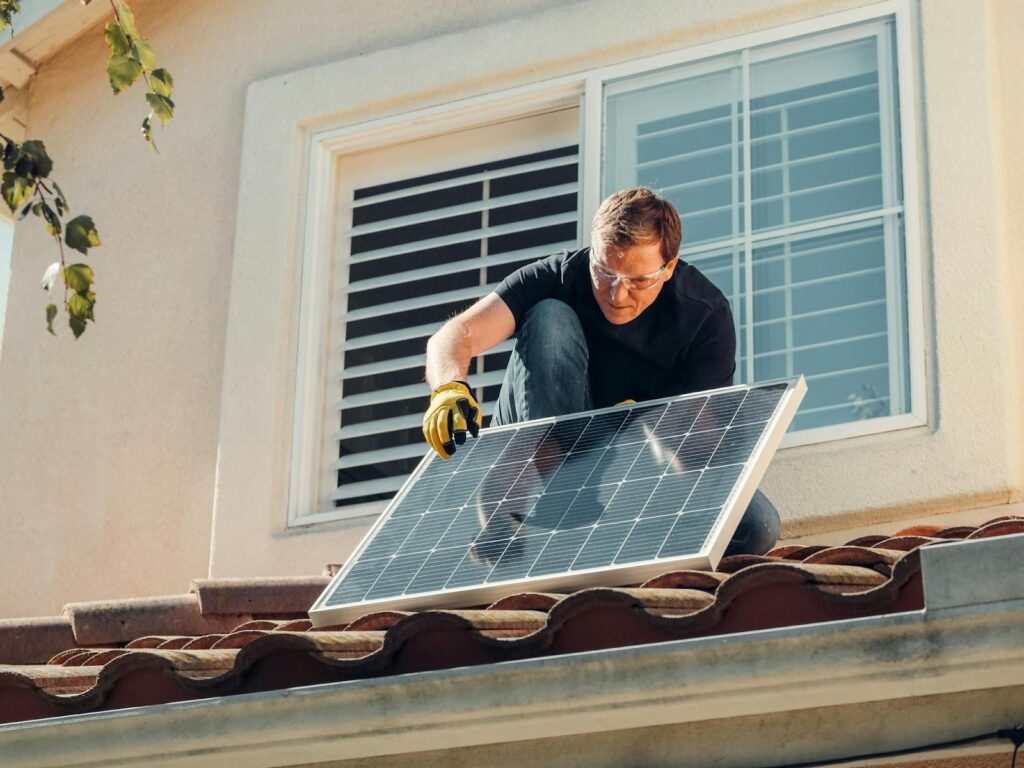
The Texas energy landscape is as vast and varied as the state, presenting unique challenges and opportunities for homeowners. With fluctuating temperatures—from scorching summers to unexpected winter freezes—and rising living costs, Texans are increasingly adopting innovative solutions to manage home energy consumption.
In 2024, Texas experienced unprecedented electricity demand, setting a new peak record of 85,559 megawatts (MW) on August 20. This surpassed the previous record of 85,508 MW set on August 10, 2023. The significant increase in demand underscores the growing energy consumption in the state, prompting homeowners to seek more efficient energy usage strategies.
Technology is stepping up at an incredible pace to meet this demand, offering a range of tools that empower homeowners to take control of their energy bills and enhance efficiency. From smart thermostats that optimize daily energy use to renewable energy integration, Texas homeowners are leveraging cutting-edge advancements to combat rising energy costs and build a more sustainable future.
Texas: An Unmistakable Leader in Energy
For many Texans, the goal is to cut expenses and contribute to a more environmentally conscious lifestyle. With Texas’ population growth fueling increased energy demand, efficient energy consumption is more critical than ever.
In 2022, Texas led the nation in wind energy production, generating 40,556 megawatts (MW), which accounted for more than 26 percent of all U.S. wind-sourced electricity. Additionally, by the end of September 2023, Texas surpassed California in installed solar power capacity, with 18,364 MW connected to its electric grid, enough to power almost 3.7 million homes during peak demand periods.
The state’s leadership in renewable energy, deregulated electricity market, and expanding technological solutions make it a prime location for homeowners seeking cost savings and sustainability.
Smart Thermostats: Taking Control of Your Home Climate
Smart thermostats have become a cornerstone of home energy efficiency in Texas. Unlike traditional models, these devices utilize learning algorithms, remote control access via smartphone apps, and integration with other smart home systems to plan and optimize energy usage.
During extreme weather conditions, such as Texas’ summer heat waves or sudden winter storms, these thermostats proactively adjust settings to maintain comfort without overloading HVAC systems. Lowering your home’s thermostat by 7-10 degrees Fahrenheit for eight hours daily can save up to 10 percent on heating and cooling costs.
For Texas homeowners looking to maximize their energy efficiency, investing in a smart thermostat is one of the most effective ways to reduce or eliminate energy waste and lower utility bills.
Advanced Insulation: Strengthening Homes Against Temperature Extremes
While smart thermostats regulate energy use, advanced insulation solutions prevent unnecessary energy loss. Proper insulation acts as a vital thermal barrier, maintaining safe indoor temperatures and reducing reliance on heating and cooling systems. Modern materials like spray foam insulation, radiant barriers, and insulated concrete forms (ICFs) are increasingly popular in Texas due to their superior energy retention capabilities.
The U.S. renewables authority, the Environmental Protection Agency (EPA), estimates that typical homeowners can reduce an average of 15 percent on their heating and cooling costs—or 11 percent on total energy costs—by air-sealing their homes and adding insulation in areas such as attics, floors laid over crawl spaces, and accessible basement rim joists.
The Inflation Reduction Act has enhanced the Energy Efficient Home Improvement Credit, allowing homeowners to claim 30 percent of the total cost of qualified energy efficiency improvements, including residential insulation and air sealing, made after January 1, 2023. This credit is capped at $1,200 annually.
Whether building a new home or retrofitting an older one, investing in high-performance insulation is a long-term strategy for energy savings and enhanced home comfort.
Heat Pumps: A Game-Changer for Texas Homes
Heat pump technology is revolutionizing home climate control in Texas, offering a highly efficient alternative to traditional air conditioners and furnaces. Unlike conventional systems that generate heat, heat pumps transfer heat, making them remarkably energy-efficient for heating and cooling.
A recent field demonstration showed that predictive heating control systems in heat pumps could reduce daily heating energy use by 19 percent. Additionally, the Inflation Reduction Act partly covers the installation cost of heat pumps, making them a viable option for homeowners looking to cut energy costs while maintaining year-round comfort.
Given Texas’ varying climate conditions, modern heat pump models provide an excellent balance of efficiency and performance.
Renewable Energy Plus Smart Grids: The Future of Texas Power
Texas leads the entire nation in wind energy production and recently surpassed California’s installed utility-scale solar capacity. In 2023, Texas added about 11.7 gigawatts (GW) of new solar capacity.
Homeowners now have greater access to clean energy solutions from various providers, including solar panel installations and renewable energy plans.
Smart grid technology enhances energy efficiency by improving electricity distribution and supporting time-of-use rate plans. These grids use digital monitoring systems to optimize energy flow, prevent outages, and integrate renewable sources effectively. Homeowners can use time-of-use pricing to reduce costs by shifting energy usage to off-peak hours strategically when rates are lower.
Energy Savings and Renewable Plans: A Texas Advantage
Texans benefit significantly from the state’s deregulated energy market, which allows consumers to choose from multiple providers. This competition often leads to lower electricity rates than states with regulated markets like California.
Those moving from california to texas might find the renewable energy plans in Texas are also more accessible, with over 100 electricity providers offering clean energy options tailored to different needs.
Additionally, Texas’ lower housing costs make energy-efficient upgrades, such as solar panels or home automation, more financially feasible than California’s expensive real estate market.
The state’s abundant renewable energy sources, tax incentives, and deregulated market give homeowners greater control over their energy spending while supporting sustainability efforts.
Embracing Technology for a Sustainable and Affordable Energy Future
Texas homeowners are at the forefront of adopting smart technologies to reduce energy costs and improve efficiency. Technology makes home energy management more manageable and cost-effective, from AI-powered smart thermostats and advanced insulation to cutting-edge heat pumps and expansive renewable energy options.
With Texas surpassing California in solar capacity and leading the nation in wind energy, the state offers a dynamic environment for sustainable living. Whether longtime residents or those relocating to Texas, homeowners can leverage these advancements to lower costs, reduce environmental impact, and enjoy a resilient energy future.
By embracing smart energy solutions, Texans are not just cutting costs—they are shaping the future of home energy in one of the nation’s most forward-thinking states.














